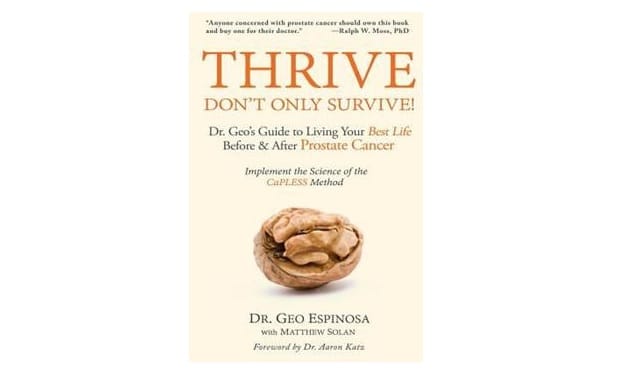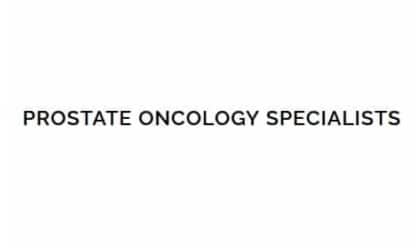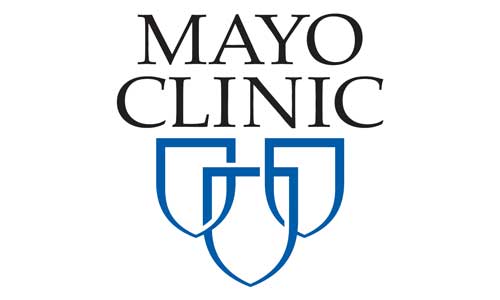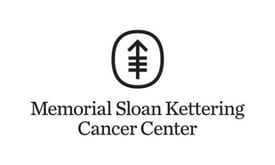During prostate cancer treatment
At this time, you’ll likely want to focus on allowing your cancer treatments to be as effective as possible while also keeping side effects under control. In addition to everything under At any time during your prostate cancer experience ›, you may consider the practices and therapies listed here.
Top practices and therapies we have reviewed for improving cancer outcomes during treatment
These practices and therapies have at least modest evidence for the medical benefits listed. We add to this list as we complete new reviews of practices and therapies.
Complementary therapies
On this page
How integrative experts approach care during treatment
Clinical practice guidelines
Specific guidelines for managing symptoms and side effects are listed in handbooks for each side effect. See Managing side effects and improving quality of life › below.
Combined moderate-intensity aerobic and resistance exercise performed two to three times per week for at least 12 weeks results in improvements in health-related quality of life both during and after treatment.
The benefit of combined aerobic plus resistance training programs appears more potent than programs consisting of only aerobic or resistance training.
Moderate-intensity aerobic training, resistance training or combined aerobic plus resistance training performed three times weekly for 8 to 12 weeks can significantly improve self-reported physical function.
Supervised exercise appears to be more effective than unsupervised or home-based interventions, although unsupervised programs may be effective in older cancer survivors.
Published programs and approaches
Lise Alschuler, ND, FABNO, and Karolyn Gazella
Alschuler LN, Gazella KA. The Definitive Guide to Cancer, 3rd Edition: An Integrative Approach to Prevention, Treatment, and Healing. Berkeley, California: Celestial Arts. 2010.
Lise Alschuler, ND, FABNO, and Karolyn Gazella list five key body pathways to target to make your body inhospitable to cancer. Three of those pathways most relevant to preventing and managing surgical complications are the immune system, insulin resistance and inflammation.
- Chapter 8, Immune system (including stress management)
- Chapter 9, Inflammation
- Chapter 11, Insulin resistance
Alschuler and Gazella also devote a portion of chapters 6 and 7 to integrative approaches to preparing for, mitigating side effects from, and enhancing outcomes of cancer surgery.
Keith Block, MD
Block KI. Life over Cancer: The Block Center Program for Integrative Cancer Care. New York: Bantam Dell. 2009.
The integrative Block Program has recommendations to people who are at different places along the cancer continuum, including during treatment.
Raymond Chang, MD, FACP
Chang R. Beyond the Magic Bullet: The Anti-Cancer Cocktail. New York: Square One Publishers. 2012.
This book describes a “new therapy based on the knowledge that certain off-label drugs, nutrients, and therapies are each somewhat effective against cancer.” Dr. Chang combines approaches for added benefit.
Jeremy Geffen, MD
Geffen J. The Seven Levels of Healing. Audio CD – 2002
Geffen J. The Journey Through Cancer: An Oncologist’s Seven-Level Program for Healing and Transforming the Whole Person. New York, New York: Three Rivers Press. 2006.
Geffen J. The Seven Levels of Healing. Presented at Cancer as a Turning Point Conference in Seattle, Washington in 2006.
The late, renowned integrative oncologist Jeremy Geffen, MD, developed a healing program based on what he calls The Seven Levels of Healing. It is a program of body, mind, heart, and spirit for healing and transforming the whole person.
Gerald M. Lemole, MD; Pallav K. Mehta, MD; and Dwight L. McKee, MD
Lemole GM, Mehta PK, McKee DL. After Cancer Care: The Definitive Self-Care Guide to Getting and Staying Well for Patients with Cancer. New York, New York: Rodale, Inc. 2015.
These doctors present easy-to-incorporate lifestyle changes to help you “turn on” hundreds of genes that fight cancer, and “turn off” the ones that encourage cancer, while recommending lifestyle approaches to address each type.
Neil McKinney, BSc, ND
McKinney N. Naturopathic Oncology, Fourth Edition. Victoria, BC, Canada: Liaison Press. 2020.
This book includes descriptions and uses of many natural and complementary protocols for cancer in general and for specific cancers. It also includes information on integrative support during conventional cancer treatment.
This book includes a protocol for prostate cancer.
Ornish Diet and Lifestyle Modification Program (for prostate cancer)
Cardiologist Dean Ornish, MD, has adapted his Ornish Heart Disease Reversal Program for use by men with prostate cancer. The program includes nutrition, fitness, stress management, and love and support.
Gurdev Parmar, ND, FABNO, and Tina Kaczor, ND, FABNO
Parmar G, Kaczor T. Textbook of Naturopathic Oncology: A Desktop Guide of Integrative Cancer Care. 1st edition. Medicatrix Holdings Ltd. 2020.
This book provides information on the treatment of 24 cancers, plus the most effective treatments of the most common symptoms affecting cancer patients while they undergo chemotherapy, radiotherapy, or surgery.
Examples of treatment approaches from noted specialists and practices
Some approaches use minimally invasive conventional procedures with some integration of complementary therapies, while others are more fully integrative in approach.
Aaron Katz, MD, active holistic surveillance
Aaron Katz, MD, is a urologist specializing in prostate cancer. Known for his program of active holistic surveillance, Dr. Katz is also known for his work with cryotherapyuse of freezing or near-freezing temperatures therapeutically; therapy can be local or general (whole-body), a minimally invasive means of treating prostate cancer. Dr. Katz has published research demonstrating that by four years after cryotherapy, men receiving this treatment report a good quality of life comparable to those who underwent active holistic surveillance.1Werneburg GT, Kongnyuy M et al. Patient-reported quality of life progression in men with prostate cancer following primary cryotherapy, cyberknife, or active holistic surveillance. prostate cancer and prostatic diseases. 2018;21(3):355–363.
For men with low-risk, early stage prostate cancer, Dr. Katz has developed a program in which his patients engage in lifestyle practices, such as diet, exercise and mind-body approaches, as well as take specific dietary supplements to decrease the risk of cancer progressing. As Katz explains:
Active surveillanceclose monitoring and delayed local treatment with curative intent as needed is an emergent strategy for management of indolent prostate cancer. Our institution’s watchful waiting protocol, active holistic surveillance (AHS), implements close monitoring for disease progression along with various chemopreventive agents and attempts to reduce unnecessary biopsies.2Berg CJ, Habibian DJ et al. Active holistic surveillance: the nutritional aspect of delayed intervention in prostate cancer. Journal of Nutrition and Metabolism. 2016;2016:2917065.
In research of this approach, particularly the nutritional component, Dr. Katz and colleagues looked at treatment rates of men on their AHS protocol and determined reasons for progression. They analyzed survival rate, discontinuation rates, and definitive treatments for low-risk and low-intermediate-risk patients enrolled in AHS at their center. They concluded that incorporating chemopreventive agents in their AHS protocol “has allowed patients to prolong definitive treatment for many years.”3Berg CJ, Habibian DJ et al. Active holistic surveillance: the nutritional aspect of delayed intervention in prostate cancer. Journal of Nutrition and Metabolism. 2016;2016:2917065.
In a later study, Katz and his colleagues reported results of a retrospective review comparing self-reported quality of life in men with prostate cancer who were treated with minimally invasive cryotherapy, cyberknife (CK) or active holistic surveillance (AHS). They looked at data over a four-year period and concluded that “after initially lower bowel habits and sexual function scores, CyberKnife or cryotherapy-treated patients had no significant difference in quality of life relative to AHS patients. These results highlight the benefit of CyberKnife and cryotherapy in the management of organ-confined prostate cancer.”4Werneburg GT, Kongnyuy M et al. Patient-reported quality of life progression in men with prostate cancer following primary cryotherapy, cyberknife, or active holistic surveillance. prostate cancer and prostatic diseases. 2018;21(3):355–363. As a group, patients who choose minimally invasive treatment may expect some initial lower function, but their quality of life will eventually improve and be comparable to quality of life reported by AHS patients.
Dean Ornish, MD, Ornish Lifestyle Medicine for prostate cancer
Cardiologist Dean Ornish, MD, originally developed his Ornish Lifestyle Medicine program to reverse heart disease and has since adapted and studied the program in men with prostate cancer. The program looks at four elements of a person’s life:
- What you eat
- How you respond to stress
- How active you are
- How much love and support you have
Compared to men under active surveillanceclose monitoring and delayed local treatment with curative intent as needed who didn’t make lifestyle changes, those who followed Ornish’s program had favorable biological markers, including lower prostate specific antigen (PSA) levels.
Simply put, the program urges you to “Eat well, stress less, love more, move more.” (These are also four of our 7 Lifestyle Practices.) In response to criticism from some conventional practitioners, Dr. Ornish asks: “What’s the more radical treatment: have a heart transplant (or prostatectomy) or walk, meditate, eat vegetables and quit smoking?“5Dean Ornish Symington 2017. The New School at Commonweal. December 12, 2017. Viewed March 25, 2023.
Even though the program “is considered experimental and investigational as a treatment” for prostate cancer,6Aetna. Ornish Cardiac Rehabilitation Program. February 28, 2018. Viewed September 20, 2018. evidence shows that adopting these healthy lifestyle changes provides benefit: compared to men under active surveillance who didn’t make lifestyle changes, those who followed Ornish’s program had favorable biological markers, including lower PSA levels. Benefits are directly proportional to the degree of lifestyle changes made.7Dean Ornish Symington 2017. The New School at Commonweal. December 12, 2017. Viewed March 25, 2023.
Research highlights of the Ornish program in prostate cancer:8Ornish D, Weidner G et al. Intensive lifestyle changes may affect the progression of prostate cancer. Journal of Urology. 2005 Sep;174(3):1065-9; discussion 1069-70; Ornish D, Magbanua MJ et al. Changes in prostate gene expression in men undergoing an intensive nutrition and lifestyle intervention. Proceedings of the National Academy of Sciences of the United States of America. 2008 Jun 17;105(24):8369-74; Ornish D, Lin J et al. Increased telomerase activity and comprehensive lifestyle changes: a pilot study. Lancet Oncology. 2008 Nov;9(11):1048-57; Dewell A, Weidner G et al. Relationship of dietary protein and soy isoflavones to serum IGF-1 and IGF binding proteins in the Prostate Cancer Lifestyle Trial. Nutrition and Cancer. 2007;58(1):35-42.
- Slower progression or stable cancer in men with early stage prostate cancer (Gleason score less than 7) or low-risk prostate cancer:
- Fewer men needing conventional treatments
- Decrease in prostate specific antigen (PSA) compared to an increase in the control group
- Inhibited prostate cancer cell growth
- Favorable gene expression
- Significant improvements in weight, abdominal obesity, blood pressure and lipid profiles
- Increased telomerase activity in peripheral-blood mononuclear cells (PBMCs)
- A rise in protective insulin-like growth factor-binding protein-1 (IGFBP-1)
Challenges with the Ornish program:
- Following the program consistently,9Dansinger ML, Gleason JA, Griffith JL, Selker HP, Schaefer EJ. Comparison of the Atkins, Ornish, Weight Watchers, and Zone diets for weight loss and heart disease risk reduction: a randomized trial. Journal of the American Medical Association. 2005 Jan 5;293(1):43-53. although Dr. Ornish says that hospitals and clinics using the Ornish Lifestyle Medicine Program are now reporting 85 to 90% of people completing the 9-week program are still following the program one year later.10Dean Ornish Symington 2017. The New School at Commonweal. December 12, 2017. Viewed March 25, 2023.
- Increased risk for deficiencies of vitamin B12, vitamin E and zinc;11Gardner CD, Kim S et al Micronutrient quality of weight-loss diets that focus on macronutrients: results from the A TO Z study. The American Journal of Clinical Nutrition. 2010 Aug;92(2):304-12. these are manageable with medical supervision and perhaps supplementation
- Insurance coverage12Ornish Lifestyle Medicine. Find an Ornish-Certified Location. Viewed March 25, 2023.
Cardiologist, researcher and CancerChoices advisor Dean Ornish, MD, discusses the transformative power of lifestyle medicine as an approach to cancer.
Play videoCharles “Snuffy” Myers, MD, and Prostapedia
Dr. Charles “Snuffy” Myers is a retired medical oncologist and prostate cancer survivor who specialized in treating prostate cancer. He practiced conventional oncology and also considered lifestyle practices, particularly diet, important for men with prostate cancer. During his practice he thought deeply and innovatively about conventional prostate cancer treatment, such as targeted therapies, as well as the problem of prostate cancers becoming resistant to chemotherapy. He served as editor-in-chief of an information and resource website for those with prostate cancer, Prostapedia, which is now part of the National Alliance of State Prostate Cancer Coalitions (NASPCC).
Dr. Myers discusses these topics and presents information on his group’s study using a drug that inhibits the enzyme poly ADP ribose polymerase (PARP) in advanced prostate cancer patients who were no longer responding to the chemotherapy drug taxotere. Dr. Myers states:
So 20% to 30% of post-taxotere patients may be candidates for PARP therapy, an oral drug associated with close to 90 percent response rate. So it’s hard for me to believe this won’t be an important advance in the management of those patients. In addition to being very well tolerated, this drug does not depend on testosterone presence or absence to work.13Myers C. Path to Durable Complete Remission in Prostate Cancer: What Do We Know and What Do We Need to Learn? Grand Rounds Urology. April 2016. Viewed March 25, 2023.
Helpful links
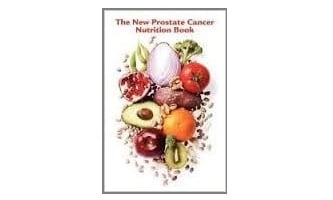
The New Prostate Cancer Nutrition Book ›
Dr. Myers wrote a cookbook specifically for prostate cancer.
Xia M, Guo Z, Hu Z. The role of PARP inhibitors in the treatment of prostate cancer: recent advances in clinical trials. Biomolecules. 2021 May 12;11(5):722.
Dr. Geo Espinosa
Dr. Geo Espinosa presented a webinar hosted by the Academy of Integrative Health & Medicine.
Posttreatment prostate cancer protocol
Dr. Geo Espinosa presented his protocols in a webinar hosted by the Academy of Integrative Health & Medicine. Selected excerpts discuss different topics related to cancer treatment.
Play video- Protocol for overall prostate cancer, beginning at 1:01:18 and continuing until 1:06:55 minutes into the recording (5 minutes 37 seconds run time)
- Protocol for low-risk prostate cancer, beginning at 16:55 and continuing until 33:37 minutes into the recording (16 minutes 42 seconds run time)
- Protocol for advanced prostate cancer, beginning at 46:42 and continuing until until 1:01:18 minutes into the recording (14 minutes 36 seconds run time)
- Dr. Espinosa answers questions about infrared therapy, berberine, use of neutraceuticals during radiation treatment, protocols for different cancer stages, whether people should take breaks from supplements, CBD oil, using supplements during PSMA therapy, and ozone therapy. This segment beginning at 1:07:23 and continuing until 1:29:18 minutes into the recording (21 minutes 55 seconds run time)
Prostate Oncology Specialists
Medical oncologists Mark Scholz, MD, and Richard Lam, MD, run an integrative oncology practice in Marina del Ray, California. Doctors Scholz and Lam state:
As medical oncologists rather than surgeons, we do not have a preset agenda toward a specific treatment. All treatments, including active surveillanceclose monitoring and delayed local treatment with curative intent as needed, hormone therapy, immunotherapy, surgery, radiation, brachytherapy, cryotherapy, focal therapy, proton therapy, nutritional and alternative therapies, HIFU and chemotherapy are given equal consideration depending on the unique needs of each individual patient.14About Us. Prostate Oncology Specialists. Viewed March 25, 2023.
Their website, books and publications provide a wealth of information on making decisions about prostate cancer treatment and shedding light on innovative, integrative approaches to prostate cancer care.
Keith Block, MD, Block Center for Integrative Cancer Treatment
Dr. Keith Block integrates lifestyle, nutrition, natural products, and other complementary approaches into conventional cancer care. At the 2003 conference of the American Society of Clinical Oncology, he presented a case series of 27 prostate cancer patients who began treatment with combined androgen blockade after diagnosis of distant metastases. All patients received conventional treatment along with counseling in therapeutic nutrition and supplementation, fitness and physical therapy, and mind-spirit care. Both survival after severe disease and survival after development of androgen-resistant disease exceeded observations of similar groups in the literature.15Block KI, Gyllenhaal C, Shoham J. Survival impact of integrative cancer care in advanced metastatic prostate cancer. Presentation at the 2003 conference of the American Society of Clinical Oncology.
Dr. Keith Block summarizes the 2003 case series described above.
Play videoDr. Block says that off-label use of calcitriol, which is the most active form of vitamin D, is of particular interest in prostate cancer. Preclinical evidence shows clear benefit and early clinical evidence to date is promising but not yet conclusive.16Ben-Eltriki M, Deb S, Guns ES. Calcitriol in combination therapy for prostate cancer: pharmacokinetic and pharmacodynamic interactions. Journal of Cancer. 2016 Jan 15;7(4):391-407.
Helpful videos
CancerChoices Senior Clinical Consultant Laura Pole, RN, MSN, OCNS, and integrative oncologist and CancerChoices advisor Donald Abrams, MD, explore integrative prostate cancer care in this webinar from the Society for Integrative Oncology.
Play videoCancerChoices advisor Brian Bouch, MD, reviews the different therapies for prostate cancer care.
Play videoImproving treatment outcomes
You can be active in improving your response to cancer treatment. Self-carelifestyle actions and behaviors that may impact cancer outcomes; examples include eating health-promoting foods, limiting alcohol, increasing physical activity, and managing stress practices and complementaryin cancer care, complementary care involves the use of therapies intended to enhance or add to standard conventional treatments; examples include supplements, mind-body approaches such as yoga or psychosocial therapy, and acupuncture therapies can improve your treatment outcomes—promoting survival, reducing metastasis, reducing tumor growth, and otherwise improving your response to conventional treatment. Please also review the Safety and precautions page within the linked reviews for guidance on safe use. We recommend supervision from a medical professional trained in the use of complementary therapies.
While wise use of complementary therapies may improve treatment outcomes, no complementary or alternativein cancer care, alternative practices or therapies such as diets or acupuncture are used instead of conventional treatments such as chemotherapy, surgery, or radiotherapy; if a therapy is used with conventional treatments, it is considered complementary and not alternative therapy is a suitable stand-alone treatment for prostate cancer.
Adherence to treatment is not a direct measure of anticancer action, but we include it here because any factor that increases adherence to anticancer treatment contributes to the direct action and potential success of that treatment
These practices and therapies add to those listed in At any time during your prostate cancer experience ›
See our separate handbook describing integrative approaches to improve surgical outcomes, including recovering from surgery.
Strong, good, or modest evidence of benefit for treatment outcomes
Strong evidenceconsistent, significant effects in several large (or at least one very large) well designed clinical studies or at least two meta-analyses of clinical studies of moderate or better quality (or one large meta-analysis) finding similar results (this is the CancerChoices definition; other researchers and studies may define this differently) indicates confidence that the practice or therapy has an effect as noted. Good evidencesignificant effects in one large or several mid-sized and well-designed clinical studies (randomized controlled trials (RCTs) with an appropriate placebo or other strong comparison control or observational studies that control for confounds) (this is the CancerChoices definition; other researchers and studies may define this differently) indicates that the practice or therapy is linked to the outcomes described with reasonable certainty. Modest evidencesignificant effects in at least three small but well-designed randomized controlled trials (RCTs), or one or more well-designed, mid-sized clinical studies of reasonably good quality (RCTs or observational studies), or several small studies aggregated into a meta-analysis (this is the CancerChoices definition; other researchers and studies may define this differently) means the practice or therapy may be linked to the outcomes described, but with a lower degree of certainty.
The evidence for these effects is described in the reviews available through the image links.
Moving More: modest evidence
Find strategies for moving more in this handbook.
Cancer as a whole:
- Possibly better chemotherapy completion rates, but no evidence of improved response rate or survival among people with cancer participating in aerobic exercise during chemotherapy (modest evidence)
Manage your body weight: modest evidence
Find strategies for managing your body weight in this handbook.
Cancer as a whole:
- A less effective response to chemotherapy among obese people (modest evidence)
Melatonin: strong evidence
Cancer as a whole:
- Better survival, tumor response, and remission among people with solid tumors treated with melatonin, mostly when combined with conventional treatments (strong evidence)
Mistletoe: modest and preliminary evidence
Cancer as a whole:
- Better survival among people with cancer as a whole treated with Iscador (modest evidence)
- Lower rates of discontinuation of standard cancer treatment (preliminary evidence)
Reishi mushroom: mixed evidence
Specific to prostate cancer:
- No evidence of an effect on prostate-specific antigen (PSA) levels among men with prostate cancer treated with reishi mushrooms in a preliminary trial
Cancer as a whole:
- A better response to chemo/radiotherapy among people with cancer as a whole treated with reishi mushrooms (modest evidence)
- No evidence of an effect on long‐term survival among people treated only with reishi in a combined analysis of studies
Turkey tail mushroom: modest evidence
Cancer as a whole:
- Slightly better survival among people with cancer as a whole treated with turkey tail added to conventional treatment (modest evidence)
Preliminary or weak evidence of benefit for treatment outcomes
Preliminary evidencesignificant effects in small or poorly designed clinical studies OR conflicting results in adequate studies but a preponderance of evidence of an effect (this is the CancerChoices definition; other researchers and studies may define this differently) means the practice or therapy may be linked to the outcomes described, although substantial uncertainty remains. Weak evidenceone or more case studies, supported by animal evidence OR small treatment effects of limited clinical significance OR studies with no controls OR weak trends of effects (this is the CancerChoices definition; other researchers and studies may define this differently) may mean that the effects are small or that a high degree of uncertainty remains about the links between the practice or therapy and the outcomes described.
Insufficient evidence or no evidence of an effect on treatment outcomes
Artesunate and other artemisinin-based drugs ›
Specific to prostate cancer:
- No evidence of an effect on prostate-specific antigen (PSA) levels in a person with prostate cancer who developed resistance to Artemisia annua capsules subsequently treated with artesunate injections
Coumarin and cimetidine ›
Advanced prostate cancer:
- No evidence of tumor regression among people with hormone-refractory carcinoma of the prostate and bone metastases treated with oral coumarin and cimetidine
Cancer as a whole:
- Insufficient evidence of anticancer effects overall
Statin use combined with radical prostatectomy does not appear to provide any benefit.
Further therapies that may provide benefit for treatment outcomes
These therapies are reported as useful in prostate cancer treatment. We have not fully assessed the evidence, although we provide preliminary reviews as linked.
Bisphosphonates
Cryotherapy
Gamma-delta T-cell immunotherapy (amino-bisphosphonates+IL-2)
Gossypol
Isoflavones, including soy supplements › and red clover
Itraconazole
Omega-3 fatty acid supplements containing DHA and EPA ›
Pomegranate fruit and extract
Sulforaphane
Managing side effects and improving quality of life
Supplements, mind-body therapies, and other complementary therapies may reduce symptoms and side effects and enhance your quality of life during cancer treatment. In addition to improving your quality of life, managing side effects may allow you to complete your cancer treatment, allowing for more benefit from conventional treatments. Many conventional treatments are also available to manage or reduce side effects of prostate cancer treatment. Most are pharmaceuticals that can incur their own side effects, such as bisphosphonates for bone loss and pain.17Ganesan K, Goyal A, Roane D. Bisphosphonate. StatPearls [Internet]. September 5, 2022. Viewed June 22, 2023; Mbese Z, Aderibigbe BA. Bisphosphonate-based conjugates and derivatives as potential therapeutic agents in osteoporosis, bone cancer and metastatic bone cancer. International Journal of Molecular Sciences. 2021 Jun 26;22(13):6869.
Some conventional prostate cancer treatments are known to cause fewer side effects than others. See your treatment options in Preparing for prostate cancer treatment ›
Therapies listed here have evidence of managing side effects and symptoms or generally improving quality of life during cancer treatment or surgery. Therapies that can help at any phase of your cancer experience are listed in At any time during your prostate cancer experience ›
For some symptoms and side effects, we have complete handbooks, as linked below. Details of the evidence supporting the summary statements are in the linked pages. For other symptoms and side effects, and for quality of life and physical function as a whole, we list here the effects of complementary therapies and practices we’ve reviewed.
We report the evidence relating to benefits from using these therapies. Please also review the Safety and precautions page within the linked reviews for guidance on safe use. We recommend supervision from a medical professional trained in the use of complementary therapies.
Quality of life or physical function as a whole
Strong, good, or modest evidence of benefit for quality of life or physical function as a whole
Moving More: strong to modest evidence
Find strategies for moving more in this handbook.
Specific to prostate cancer:
- Better quality of life during androgen deprivation therapy among people participating in exercise (strong evidence)
- Better fitness during androgen deprivation therapy among people participating in exercise (preliminary evidence)
- Better quality of life and ability to control urination after surgery among people participating in pelvic floor muscle training (modest evidence)
- Better muscle strength during treatment with androgen-deprivation therapy among people with locally advanced, relapsed, or metastatic prostate cancer participating in group aerobic and resistance training exercise (weak evidence)
Cancer as a whole:
- Better fitness, strength, and quality of life among people participating in exercise during treatment, except not among people with shoulder dysfunction due to treatment for head and neck cancer (good evidence)significant effects in one large or several mid-sized and well-designed clinical studies (randomized controlled trials (RCTs) with an appropriate placebo or other strong comparison control or observational studies that control for confounds) (this is the CancerChoices definition; other researchers and studies may define this differently)
- Less toxicity during chemotherapy among people with cancer participating in exercise (modest evidence)significant effects in at least three small but well-designed randomized controlled trials (RCTs), or one or more well-designed, mid-sized clinical studies of reasonably good quality (RCTs or observational studies), or several small studies aggregated into a meta-analysis (this is the CancerChoices definition; other researchers and studies may define this differently)
Acupuncture: modest evidence
Cancer as a whole:
- Better physical performance and quality of life during conventional treatment among people treated with acupuncture (modest evidence)
Astragalus: good evidence
Cancer as a whole:
- Better quality of life during chemotherapy or radiotherapy among people treated with herbal medicines containing astragalus (good evidence)
Melatonin: modest and preliminary evidence
Cancer as a whole:
- Less chemotherapy-related toxicity among people treated with melatonin (modest evidence)
Mistletoe: good and modest evidence
Cancer as a whole:
- Fewer side effects of conventional treatments among people treated with mistletoe (good evidence)
- Better quality of life during chemotherapy among people with cancer as a whole treated with mistletoe (modest evidence)
Reishi mushroom: modest evidence
Cancer as a whole:
- Better quality of life during chemotherapy or endocrine therapy among people treated with reishi mushroom (modest evidence)
Relaxation techniques: modest and preliminary evidence
Cancer as a whole:
- Better quality of life and function during chemotherapy among people treated with relaxation, often with other complementary therapies (preliminary (conflicting) evidence)
Tai chi or qigong: modest evidence
Cancer as a whole:
- Better quality of life during conventional cancer treatment among people practicing tai chi (modest evidence)
Preliminary or weak evidence of benefit for quality of life or physical function as a whole
No evidence or insufficient evidence of benefit for quality of life or physical function as a whole
Cancer as a whole:
- No evidence of an effect on recovery time or return to normal physical activities among people undergoing major laparoscopic procedures treated with acupressure devices in a preliminary study
Further therapies reported to provide benefit for quality of life or physical function
Anxiety
This handbook includes a description of practices and therapies that can help you manage anxiety.
Bladder infection and cystitis
Therapies reported to provide benefit for bladder infection and cystitis
Cranberry juice or extract
Homeopathic therapies
Blood-related side effects
Good or modest evidence of benefit for blood-related side effects
Melatonin: modest evidence
Cancer as a whole:
- Less severe reductions in blood cell counts during chemo/radiotherapy among people treated with 20 mg oral melatonin, but no evidence of an effect with 40 mg oral melatonin (modest evidence)
Mistletoe: modest evidence
Cancer as a whole:
- Fewer reductions in white blood cells from chemotherapy, surgery, and/or radiotherapy among people treated with mistletoe (modest evidence)
Moxibustion: modest and preliminary evidence
Cancer as a whole:
- Better white blood cell counts during or after conventional cancer treatment among people treated with moxibustion (modest evidence)
- Higher serum hemoglobin during or after chemo/radiotherapy among people treated with moxibustion (modest evidence)
- Higher platelets during chemo/radiotherapy among people with cancer treated with moxibustion compared to no treatment, but no further benefit when added to conventional treatment (preliminary evidence)
Reishi mushroom: modest evidence
Cancer as a whole:
- Better levels of blood components during chemotherapy among people treated with reishi mushrooms (modest evidence)
Turmeric and curcumin: modest evidence
Cancer as a whole:
- Less neutropenia during chemotherapy (modest evidence)
See cautions about blood-related side effects of use in Safety and precautions ›
Preliminary or weak evidence of benefit for blood-related side effects
Further therapies reported to provide benefit for blood-related symptoms
Inositol hexaphosphate
Body composition or cachexia
Good or modest evidence of benefit for body composition or cachexia
Moving More: strong and good evidence
This handbook includes strategies for moving more.
Cancer as a whole:
- Increased lean body mass and less body fat or obesity during neoadjuvant or adjuvanttreatment applied after initial treatment for cancer, especially to suppress secondary tumor formation chemotherapy, radiotherapy, or hormone therapy, including androgen deprivation therapy, among people participating in exercise (good evidence)
Further therapies reported to provide benefit for body composition and cachexia
Bone and joint symptoms
Preliminary or weak evidence of benefit for bone and joint symptoms
Further therapies reported to provide benefit for bone and joint symptoms
Black cohosh
Isothiocyanates
Cardiovascular side effects
Good evidence of benefit for cardiovascular side effects
Manage your body weight: good evidence
Find strategies for managing your body weight in this handbook.
Not specific to cancer:
- Higher risks of cardiovascular complications after surgery among people with excess body weight (good evidence)
Preliminary or weak evidence of benefit for cardiovascular side effects
Further therapies reported to provide benefit for cardiovascular side effects
Acetyl-L-carnitine
Allicin
Coenzyme Q10
Indole-3-carbinol (I3C)
Changes in appetite
Preliminary or weak evidence of benefit for changes in appetite
See our handbook on the Beyond Conventional Cancer Therapies website: Changes in appetite ›
Cognitive difficulties
Preliminary or weak evidence of benefit for cognitive difficulties
Depression
This handbook includes a description of practices and therapies that can help you manage depression.
Fatigue
This handbook includes a description of practices and therapies that can help you manage fatigue.
Gastrointestinal symptoms
This handbook includes a description of practices and therapies that can help you manage gastrointestinal symptoms including constipation, diarrhea, nausea and vomiting, and heartburn.
Hot flashes
This handbook includes a description of practices and therapies that can help you manage hot flashes.
Lymphedema
Therapies reported to provide benefit for lymphedema during treatment
Selenium
Neuropathy and other neurological symptoms
This handbook includes a description of practices and therapies that can help you manage neuropathy and other neurological symptoms such as changes in sensation, lack of coordination, ringing in ears, and more.
Oral symptoms
Some drug treatments for prostate cancer can cause mouth sores (mucositis).
Preliminary or weak evidence of benefit for oral symptoms
Further therapies reported to provide benefit for oral symptoms
Aloe vera
L-glutamine
Rose geranium in sesame oil nasal spray
Pain
This handbook includes a description of practices and therapies that can help you manage pain.
Sepsis
Good evidence of benefit for sepsis
Vitamin C: intravenous use: good evidence
Not specific to cancer:
- Lower mortality and better SOFA scores, which are the sum of respiratory status, liver function, renal function, coagulation function, circulatory status, and nervous system score, among people with sepsis treated with IV vitamin C (good evidence)
Sexual difficulties
Modest evidence of benefit for sexual difficulties
Physical therapy for erectile dysfunction
After a prostatectomy, men frequently experience erectile dysfunction and pelvic pain. Although physical therapy is a conventionalthe cancer care offered by conventionally trained physicians and most hospitals; examples are chemotherapy, surgery, and radiotherapy approach for managing erectile dysfunction, you may need to ask for a referral.
- Less erectile dysfunction after radical prostatectomy among people treated with pelvic floor muscle training in a review of 9 studies18Wong C, Louie DR, Beach C. A systematic review of pelvic floor muscle training for erectile dysfunction after prostatectomy and recommendations to guide further research. Journal of Sexual Medicine. 2020 Apr;17(4):737-748.
- Better erectile function and less urine leakage during orgasm (climacturia) among men with persistent erectile dysfunction for 1 year or longer after radical prostatectomy practicing pelvic floor muscle training for erectile dysfunction for 3 months compared to no intervention in a small RCT19Geraerts I, Van Poppel H et al. Pelvic floor muscle training for erectile dysfunction and climacturia 1 year after nerve sparing radical prostatectomy: a randomized controlled trial. International Journal of Impotence Research. 2016 Jan-Feb;28(1):9-13.
Moving More: modest evidence
Specific to prostate cancer:
- Better sexual function during androgen deprivation therapy among people with prostate cancer participating in exercise (modest evidence)
Preliminary evidence of benefit for sexual difficulties
Therapies reported to provide benefit for sexual difficulties
Ashwagandha
See our handbook on the Beyond Conventional Cancer Therapies website: Sexual difficulties ›
Skin and tissue symptoms
Preliminary or weak evidence of benefit for skin and tissue symptoms
Further therapies reported to provide benefit for skin and tissue damage
Grape seed extract
L-glutamine
Sleep disruption
This handbook includes a description of practices and therapies that can help you improve your sleep quality.
Urinary incontinence
Preliminary or weak evidence of benefit for urinary incontinence
Length of hospital stay
Good or modest evidence of benefit for length of hospital stay
Moving More: good evidence
Find strategies for moving more in this handbook.
Cancer surgery or other types of surgery:
- Shorter hospital stays and substantially fewer complications from cancer surgery or other types of surgery among people participating in exercise training before surgery (good evidence)
Manage high blood sugar and insulin resistance: modest evidence
Find approaches for managing high blood sugar and insulin resistance in this handbook. Medical supervision may be needed.
Not specific to cancer:
- Longer hospital and/or intensive care unit (ICU) stays after surgery among people with diabetes with poor glycemic control (modest evidence)
Preliminary or weak evidence of benefit for length of hospital stay
No evidence of benefit for length of hospital stay
Cancer as a whole:
- No evidence of an effect on recovery time, length of hospital stay, or return to normal physical activities among people undergoing major laparoscopic procedures treated with acupressure devices in a preliminary study
Further therapies reported to provide benefit for length of hospital stay
Mind-body therapies › including meditation, music therapy, cognitive-behavioral therapy, and hypnosis
Wound healing
Insufficient (conflicting) evidence of benefit for wound healing
Cancer as a whole:
- Insufficient (conflicting) results of better healing of acute wounds among people with cancer
Other surgery-related side effects
Good or modest evidence of benefit for other surgery-related side effects
Manage your body weight: good and modest evidence
Find strategies for managing your body weight in this handbook.
- Longer surgery times, higher illness (morbidity) after surgery, higher rates of conversion from laparoscopic to open surgery, and higher risk of infection and other complications related to surgery among people who are obese (good evidence)
- Higher risk of surgical site infection among people who are obese (modest evidence)
Manage high blood sugar and insulin resistance: modest evidence
Find approaches for managing high blood sugar and insulin resistance in this handbook. Medical supervision may be needed.
Not specific to cancer:
- Higher risk of infection and other complications, including short-term mortality, after surgery among people with poor glycemic control and/or insulin resistance (modest evidence)
Learn more
References




